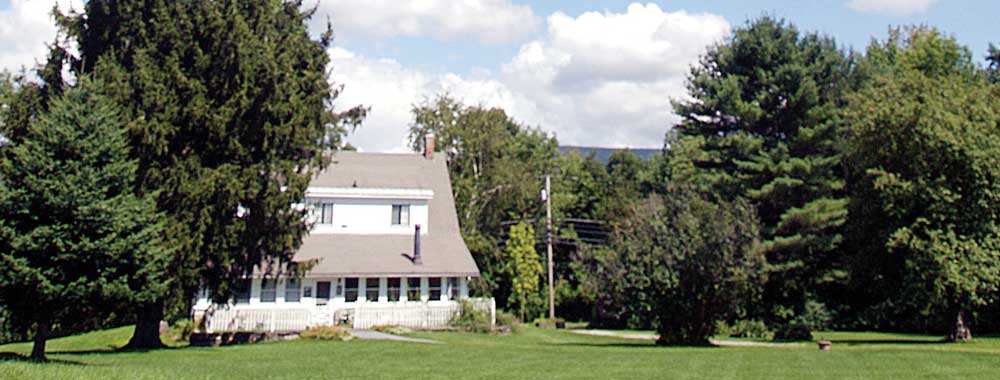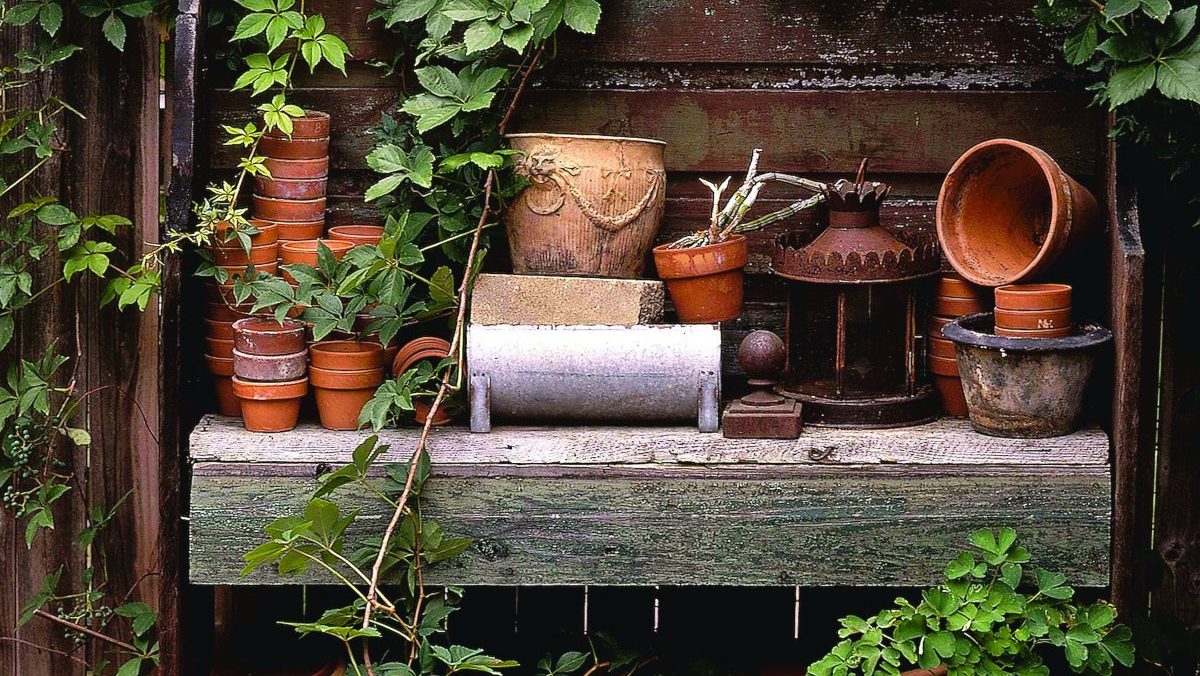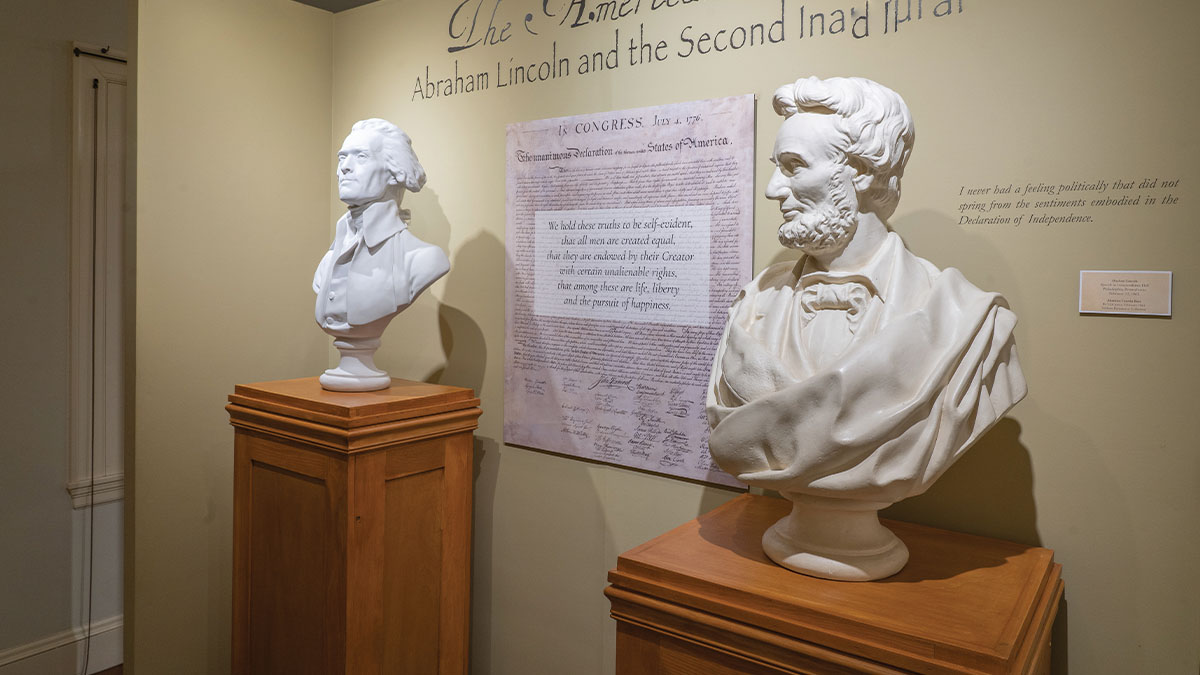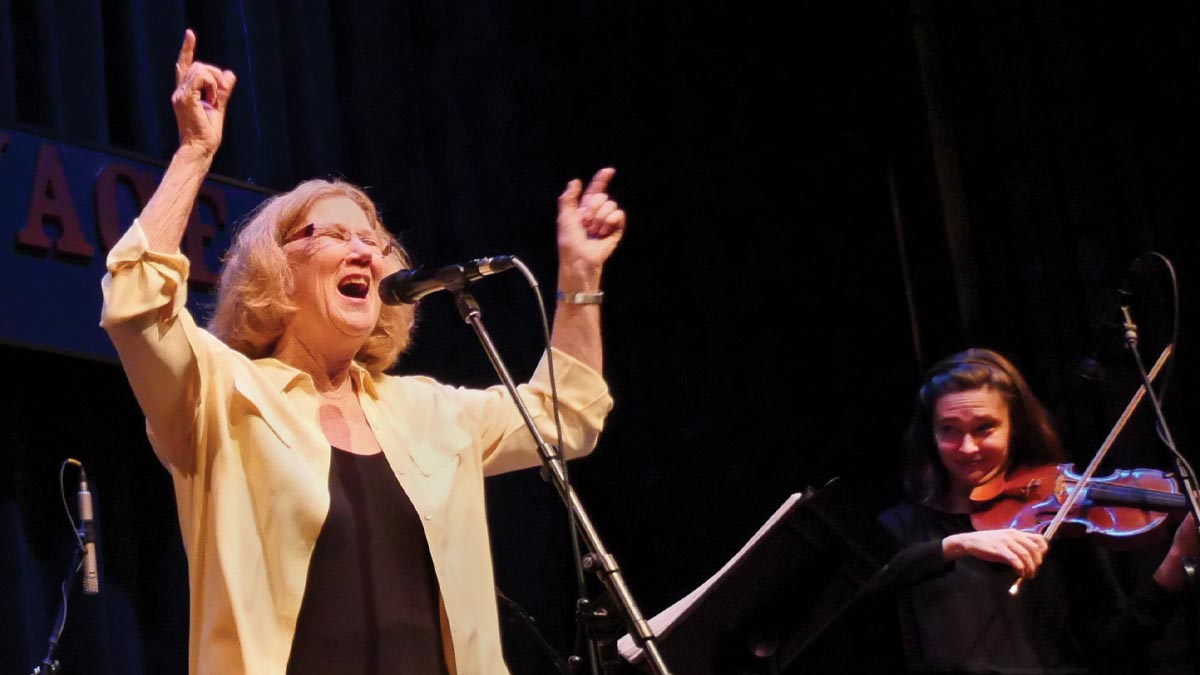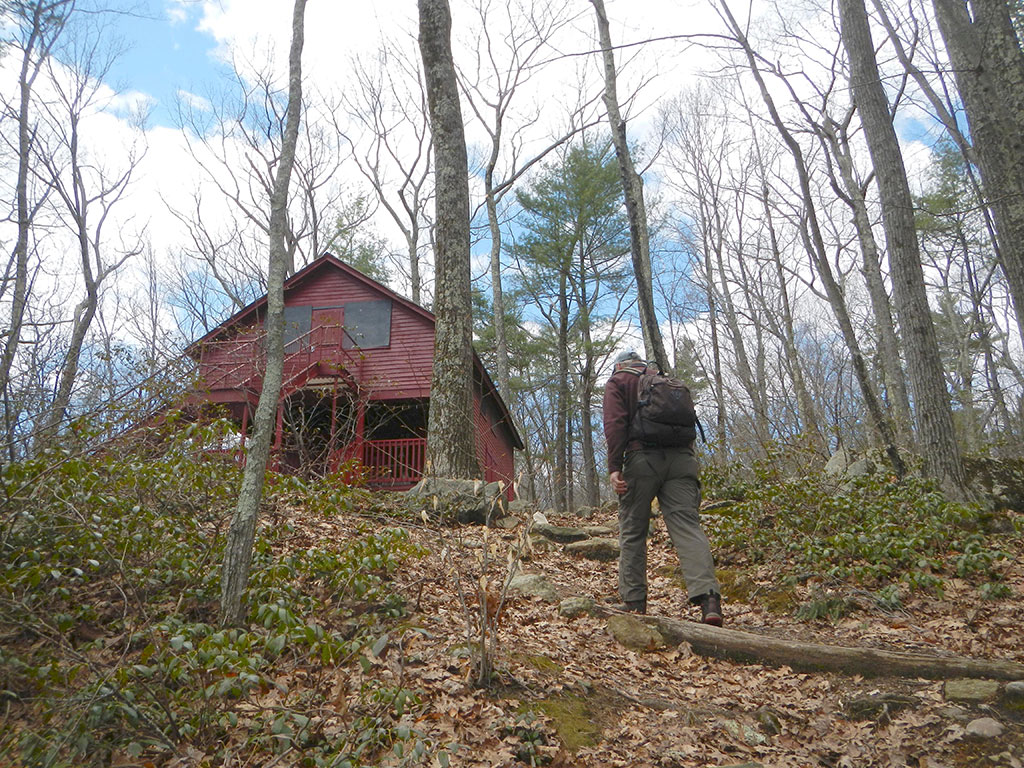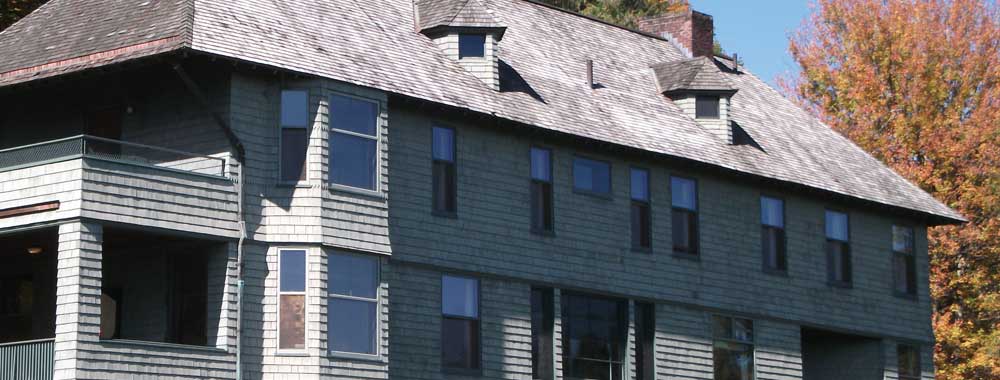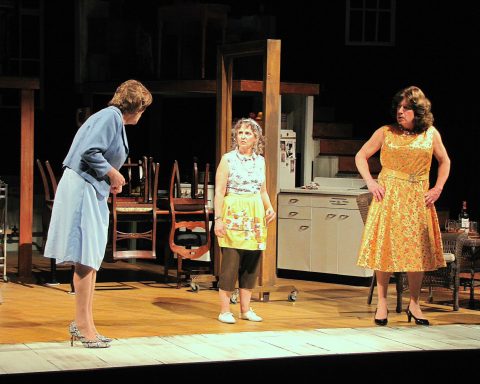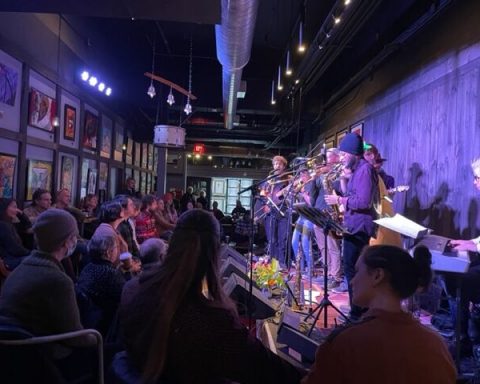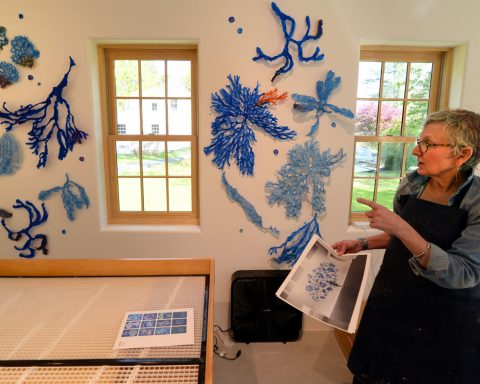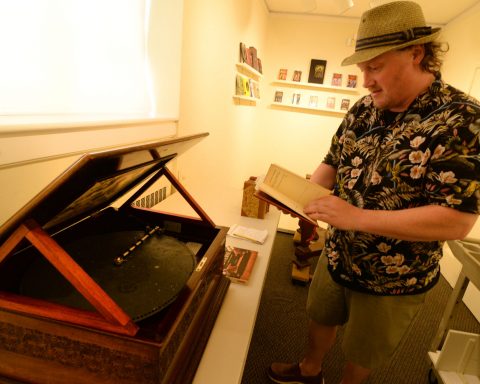The Robert Frost Stone House Museum puts literary history on display

The Robert Frost Stone House Museum is open 11 a.m. to 5 p.m., Wednesday through Sunday.
By Telly Halkias
SHAFTSBURY, Vt.
For almost a century, American students from grammar to graduate school have committed the following lines of the great poet Robert Frost (1874-1963) to memory: “Whose woods these are I think I know / His house is in the village, though.”
As it turns out, if talking about Frost, “his” house, known today as the Robert Frost Stone House Museum, is not quite in the village of Shaftsbury proper, but still within its boundaries, perched off the west side of Vermont Historic Route 7A.
The home, located only a few miles away from Frost’s gravesite in the Old First Church of Bennington’s cemetery, is on the National Register of Historic Places.
From 1920 to 1929, Frost lived here, having left a teaching post at Amherst College to try his hand at apple farming — but never giving up on his writing.
Good thing, too, because when you stop in for a visit, you’ll be able to walk the rooms where Frost worked on many of the poems included in “New Hampshire,” his first of four lifetime Pulitzer Prize winners.
Surprises abound. Here, Frost also wrote his most famous poem, “Stopping by Woods on a Snowy Evening” (its opening lines are found above).
What you might not have known is that, unlike the romantic legend of the poet penning his most-often recited verse under snowfall, the truth is more mundane, yet still a matter of intrigue: You’ll learn how Frost came to write the poem on a hot June morning in 1922, at the dining room table of the stone house.
As such, inside the museum, that entire room is dedicated to Frost’s American classic. Along with the historic dining room exhibit, there are curated photographs of Frost and his family, a facsimile of the “Stopping By Woods on a Snowy Evening” manuscript and a collection of woodcuts by the illustrator of Frost’s many books, the artist J.J. Lankes.
After Frost’s death, his family eventually sold the home, and it was acquired from private hands by Carole Thompson and the nonprofit organization Friends of Robert Frost, who then proceeded, since 2002, to run it as a museum. Its displays and grounds always reflected a modest tribute to the great poet, open to visitors part of the year and mostly filled with static, educational displays.

In this May 2, 2018 photo Megan Mayhew Bergman, director of the Robert Frost Stone House Museum, stands in front of the famous Frost poem “Stopping By Woods on a Snowy Evening” painted on a wall of the museum. Frost wrote the poem at the house on a warm June morning in 1922.
In 2017, upon Thompson’s retirement, The Friends of Robert Frost gifted the Museum and its surrounding 7 acres, containing long-dormant parts of Frost’s beloved apple orchards, to nearby Bennington College.
During its first year in college hands, the museum saw a re-imagining, as well as 3,000 visitors, according to its director, award-winning author Meghan Mayhew Bergman, who also teaches literature and writing at Bennington.
“Some people think of an author’s house as being a dusty old place where students go on a field trip,” Mayhew Bergman said. “We imagined a more dynamic place, where people could learn about Frost and his rich, creative time in Shaftsbury, but also where students and community members could come together, create place-based art, have nourishing conversations and enjoy mindful time outdoors.”
One of the popular attractions loosely connected to the museum is the nearby Robert Frost Hiking Trail, a project of the nonprofit Fund for North Bennington.
Opened in 2011, it has evolved into a popular attraction often mentioned in tandem with the museum, as its trailhead is literally a stone’s throw from their shared driveway. The trail is a 2.1-mile rolling path through the Shaftsbury and North Bennington woods and across Paran Creek, which weaves its way to nearby Lake Paran. Many visitors to the museum also make the hike, which is open to the public all year.
Friends of architecture should also note that the stone house, built circa 1769, was considered significant even before Frost’s ownership. Having been altered very little since Frost’s time there, the house itself is a rare example of Dutch Colonial architecture made of native stone and timber.
Still, the poet’s legacy is at the core of the Stone House Museum, and its new keepers from Bennington College are working to develop annual programming that connects the spirit of Robert Frost with a new generation, and with the surrounding community.
“We’ve put together inclusive, exciting programming for 2019,” Mayhew Bergman said. “This includes bluegrass concerts, indigo-dying workshops, art shows, nature walks, mindfulness and poetry workshops, and readings from excellent poets.” •

Poet Robert Frost shown in 1924.
Robert Frost Stone House Museum
121 Historic Route 7A, Shaftsbury, Vt.
Hours: 11 a.m. to 5 p.m., Wednesday through Sunday, May 1 to Nov. 1
Admission: Adults, $10; seniors and students, $6; younger than 18, $5; active-duty personnel and children younger than 10: free.
More information: 802-447-6200,
https://www.bennington.edu/robert-frost-stone-house-museum
Telly Halkias is a national award-winning, independent journalist. He lives and writes from his homes in Southern Vermont and coastal Maine.
